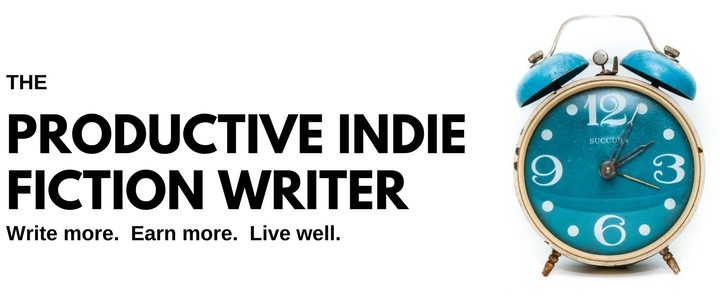
Continuing the series of look-back-and-review posts, rebuilding the original definitions and “whys” I posted when I first started this blog, four years ago…because so much has changed since then!
Today, I’m looking at the original post; ‘Why “Write More”?’, which I originally posted here on January 5th, 2018.
——–
We’re moving toward the end of the original definitions and will be able to move on to specifics in a few more posts. I’m looking forward to that!
For now, why “Write more”?
The Bipolar Indie Scene
Recently, David Gaughran has written a number of posts about the Wide/KU debate that rages in the indie publishing industry at the moment. His is an interesting perspective. In his post “A Tale of Two Marketing Systems”, he lays out the theory that two completely different styles of marketing are needed depending on which camp you are in.
I think the polarization is more severe than that. I think two different types of writing are needed, depending on which camp you are in. In later posts, I’ll go into that in more detail. For now I merely want to establish that there is a difference.
It’s interesting that, even four years ago, I was becoming aware of this great divide in the indie scene.
There is chatter, here and there, these days that the divide isn’t there at all, that it’s a construct used by theorists, and in actual fact, indie authors aren’t changing their approach to indie based on wide or not.
To which I cry “bullshit!”
I’ve been in both camps. My last stint in KU lasted only six terrifying months, before I pulled the plug in June of 2020.
I can confirm absolutely that the tactics, strategies, your work processes and what you write, even the length, the sub-genre, and your release schedule, and especially how you market your books, are completely and utterly different depending on whether you’re embracing the KU approach, or going as wide as you possibly can.
Or they should be different, if you want to be as effective and successful as possible in your chosen approach.
I can’t even conceive of how hybrid (some wide, some KU titles) authors manage their careers and their time. The two approaches are so different, that they’d have two virtual streams running through their business. The very idea makes me shudder. That’s a recipe for huge time-sinks and diminished writing time.
KU Authors
If ever there was a reincarnation of the classic pulp fiction industry, then KU publishing is it. Authors must hew to genre expectations and tropes as if they’re on rails, and while they’re at it, publish at pulp speed, too. Amazon favors authors who publish every 30 days or less.
Writing more is a survival skill for KU authors.
I don’t know that this is accurate anymore, if it ever was. I could see why I thought KU writers were the new pulp writers, four years ago. It seems logical, except that now I’ve been in KU and emerged once more, I have to say that I think that wide authors are the new pulp writers. I’ll explain that one, below.
KU writers do have to write absolutely within the middle stream of their chosen genre, and they must pump out books quickly. But that’s not actually what pulp writers used to do, in the golden age of commercial fiction. (Again, more below).
I don’t think there’s a classic equivalent to KU authors, especially these days. It’s such a huge gamble, heading into KU—more so than it was even a few years ago.
Writing more serves KU authors. There’s little else that does, except for launching big.
Wide authors
The waters are a lot calmer when you’re wide. There’s no pressure to spike your sales upon launch, or promote yourself into the top ranks in order to be seen. Everything the wide author does is an incremental process, from acquiring reader emails organically, to advertising campaigns that add a few extra books per day…to publishing another title.
This is why I think wide authors are the new era’s pulp writers.
- Pulp writers wrote quickly, producing multiple stories.
Wide authors are well served by writing more, too. - Pulp writers sold to every conceivable market that would buy their stories, often across multiple genres and pen names.
Wide authors frequently sell their stories, especially the shorter ones, to pro markets for good money. They’re agnostic to market and will distribute their stories anywhere they can generate a trickle of revenue. The more distribution points (markets) the better. They’re also masters (or should be) at recycling their copyright, selling reprints, repackaging stories into collections, anthologies with other authors…. - Pulp writers weren’t concerned with writing the perfectly generic story that was just a little bit different from last week’s. They instead wrote to thrill and captivate their readers, in whatever way they could, so the readers would read their stories no matter where they appeared. New was good. Novel was great. The unexpected and different was even better.
This is a subtle difference to KU authors, who must be careful to serve up stories that are generic and familiar comfort food to their readers.
Wide authors, like pulp writers, also write to thrill and captivate their readers, in whatever way the story must be structured to achieve that effect.
And back to the original post:
While the wide author’s gait is even, the pace at which you release books does affect your bottom line, so it pays to write more. Every book released is another trickle to the multiple streams of income you’re generating.
This is still true.
The purely traditional author
It’s often assumed that a traditional author is the most staid of fiction authors, and if an author abides by their traditional contracts with their non-compete clauses and demands to see the next project, then one-book-a-year is the fastest the gas pedal can go.
However.
Stephen King’s character, Mike Noonan, in Bag of Bones, like many of his characters, is an echo of King himself. Noon is a fiction writer, traditionally published, and living in Maine. The most interesting aspect about Mike Noonan is the hint about King’s productivity. The character publishes one book a year…but writes more than that and sticks the books in a drawer for a rainy day.
The rainy day comes, of course. Noonan goes through a multi-year case of writer’s block and uses all his “backup” books. Without that stash, he’d have been hooped.
Even from a purely traditional, one pen-name only perspective, authors benefit from writing more.
This still holds today.
Writing more also allows an author to write under more than one pen-name, in more than one genre, multiplying their advances per year and therefore their revenue. It also gives you a chance to have fun writing something other than the next book in your main series.
Which starts to sound a lot like the old pulp writer business, too. If traditionally published authors add indie titles to their portfolio, they’re stepping even more firmly into fiction factory territory.
Writing More -> Writing More.
In part, discovering this facet of creativity is what prompted me to start this blog.
In the months leading up to Christmas 2017, I spent countless hours hand crafting gifts for everyone on my gift list. I would spend long hours in the evening and on weekends, creating not just the gifts, but the cards, boxes and wrapping to hold them, while documenting all of it with photos and journal notes. It’s something I’ve wanted to do for many years, but the day job + writing wouldn’t allow it.
I always presumed that blowing all my creative “juice” on craft projects meant that I wouldn’t have as much to spare for writing, the next morning.
Not so.
After some very long evenings, I woke up refreshed and ready to go. The story ideas flowed smoothly and the writing zoomed along.
This happened not just once, but nearly all the time. Creativity, it seems, begets creativity.
I extended the theory: What if, instead of crafting, I filled my spare time with writing, instead?
Thus, this blog and the mad experiment were born.
Although, I don’t need to finish the experiment to know that this works. The more I write, the more I get written. Creativity is a muscle, not a gas tank.
I don’t craft nearly as often as I want to, these days. Instead, I write “secondary” fiction – short stories, novelettes and novellas, in whaterver genre I want. This is fun writing, the mental floss. I don’t write it to sell it, but I’ve ended up selling nearly everything I’ve written, so far.
Creativity, no matter its form, does beget more creativity, even if it’s just a different type of fiction writing.
I’ve had proof of that just today (and I’m trying to not get weirded out by the amazing timing that brings me to writing this post today, too).
Yesterday, I cleared the decks and got down to plotting and writing a short story for a pro market that I really, really wanted to submit to. The deadline is only a couple of days away, and I’ve frankly dithered over plotting the story, because it was a challenging sub-genre.
As this is a secondary writing project, I could have easily blown off the work. It doesn’t matter if I write it or not. No one will know. Readers won’t be screaming in protest about when the next book in a series will be out (as they do with my primary writing).
I gritted my teeth together and made myself finish the story. The white-knuckle effort only lasted about thirty minutes before I was into the story and writing like a mad thing. But those thirty minutes hurt. I so badly wanted to go clean the house, play spider, watch a movie, write blog posts…anything but write the story.
This is where the magic happens: I cleaned up the story and submitted it, and was so chuffed with myself for getting it done. That was yesterday. Today, I woke up raring to go. I’m ready to get back to the book I put aside for a few days to get the dead-line-driven short finished. I’m looking forward to finishing that book, now, too.
Creativity begets creativity. And writing more drives you to write even more.
Try it yourself. Aim to write for more hours than you are already. Temporarily, put aside other commitments and indulge yourself with a week of immersion therapy.
See what happens.
I guarantee you’ll find that you have never written faster, with more clarity, or drive.
Best: You won’t want to stop.
You really won’t want to stop once you’ve caught the bug.
Try writing more than you usually do. You have nothing to lose, no matter where you are in your career, or in what direction you’re driving it.
Tracy.


I started The Productive Indie Fiction Writer because I’ve written and published over 120 books (under all my pen names) since 1999, and I was constantly asked how I managed to write so much, because I didn’t get to quit my day job until 2015. I’ve learned how to be efficient, and how to steer my career, and I can share that with you.
How-to books are generic, while finding your full potential as an author is highly personal. I can help you find solutions to maximising your productivity and your effectiveness in your career as a fiction author.
If you would like one-on-one personal help in achieving your best, you’ll find options on my Patreon page that you can’t get from reading the blog alone, plus early access and exclusive access to blog posts that don’t appear here. Or chat with me directly on my Discord channel and share your success with other authors.
Choose the option that lets you work the way you prefer.
Tracy.
